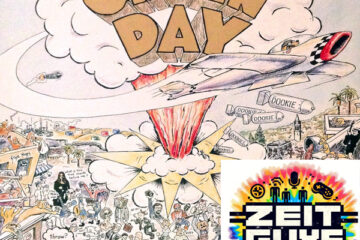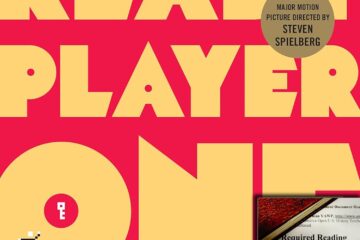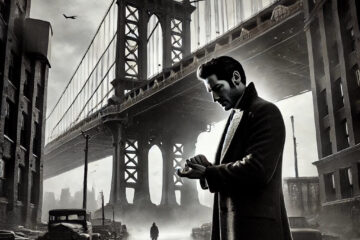We will do a review post later, but here I will put some scene analysis here. The movie as a whole is designed to show the nationalism of the Revolutionary era overlaying the American confidence in the post Cold War Era. However, we beg the question after 9-11, with Britain being our closest allies, would this movie have even come out 18 months later?
Call to Militia by Able Gebru
On the 27th of June 2000, The Patriot, a movie filled with patriotic events, was released. The Patriot showed scenes of people coming together and being united. One scene itself shows everyone coming together as a whole. As Gabriel the eldest son of Benjamin Martin approaches a church he suddenly stops and looks at three men hanging from a tree. The scene is made even creepier by adding crow noises and low fog while approaching the church. When Gabriel walks into the doors of the church, the congregation sits down and stops singing. Gabriel interrupts the reverend by wanting to make an announcement to everyone at church. The scene is filmed with a low angle shot when showing the reverend. This shows how the reverend has the most power in the church. When showing Gabriel, the film is shown with a point-of-view shot. In the background you can see the facial expressions of everyone at the church. They used a point-of-view shot for this to help the audience see the facial expressions of what Gabriel has to say.
Gabriel tells everyone news that puzzles them at first. Gabriel tells the people, “The South Carolina Militia is being called up.” Gabriel is trying to recruit as many men as he can to fight with him. While Gabriel is trying to recruit people to fight, the reverend is going against Gabriel. The people in the church were there to “Pray for the souls of those men hanging outside.” Gabriel believes you should honor the men by fighting with him. People at the church were all against Gabriel and were speaking against him. Anne Howard, a girl sitting in the congregation, stands up and gets everyone in line with Gabriel. She is filmed with a point-of-view shot so the audience can really feel what she is saying. Howard’s facial expressions show the true meaning of getting up and fighting for what you believe in. Howard calls everyone out by exposing them for just talking but not proving their actions. Howard finished her speech and slowly men started to stand up and volunteer to fight alongside Gabriel including the reverend. The patriotic music in the background helps sway the meaning of being united. The end of the scene shows the men riding off as one.
Revenge Scene by Kallyn Wise
In “The Patriot,” Benjamin Martin, played by Mel Gibson, becomes a hero to protect his family. After his son, Gabriel Martin, was captured by the English and was going to be hung for treason, Benjamin knew that he had to get his son back. He was filled with rage and agony. Just moments before he decided to attack the Englishmen who took his oldest son, a Colonial shot and killed one of his other sons. The death was a spark inside Benjamin. He always knew that family was more important than fighting, but he decided that he needed to fight for his family. The scene may be very emotional and graphic. His two younger sons who look to be about six to ten years old, were given guns and told different orders by their father. One of the little boys was so terrified of having to kill another person and seeing his dad kill other people. The two boys were in shock when they saw their dad kill of each and every one of the British soldiers who captured Gabriel. In the scene, Benjamin is covered in blood from his son who just passed. The man looks as if he is in so much emotional pain from losing his son. At the very end of the killing, he continually beats one of the soldiers even after the soldier was dead, which terrified his sons to see him that aggressive. Throughout the fighting scene, Benjamin is seen in smoke or is seen as a shadow running between trees. The audience knows that it is Benjamin who was the skilled one to kill all of the men, but the characters call him the “ghost.” Finally, this scene is a turning point in the movie. The audience and Benjamin understand that he now has to fight in the war and risk his life and the life of his family. The movie scene was a shift because Benjamin now knew that he would have to sacrifice so much for his family and his family’s safety.
Scene Analysis by Penelope Vickers
The Patriot (2000) is a movie about a big family who is living through the Revolution and their father, Benjamin Martin navigates his family through adversity. There is a scene towards the beginning of the movie where Benjamin Martin’s son is shot and killed by a British general. At the same time, Martin’s oldest son is taken prisoner by the soldiers. As the other children are sobbing and panicking over the sight they just witnessed, Benjamin immediately runs back into the house and grabs multiple guns and weapons from a chest. It was very clear that the father had a distinct change in attitude because of how determined his face had become. As the audience, it was obvious the father wanted revenge for his son.
He gives two of the guns to his remaining young sons and tells his other children to stay at the house. The father and three boys start running through the nearby forest to catch up with the British troop. Benjamin stops his sons at the edge of a hill where they will have a clear shot at the British. As the British troop surfaced, the two boys were aiming and ready to fire and their father was apprehensive to get revenge. Once the soldiers were well into view, one of the boys shot the main general off of his horse first, which caused an onslaught of bullets being sent back and forth from both sides. After skillfully shooting down almost all of the British soldiers,
Benjamin ran down the hill to where the remaining soldiers were. Each family member was contributing to taking down each soldier one by one. Martin quickly untied his oldest son from the ropes binding his wrists, and proceeded to kill off every last soldier.
Benjamin took all of his pain and grieving out on the very last soldier by bludgeoning him repeatedly, to the point where he was completely covered in the man’s blood by the time he was done. The three sons watched their father do this and were visibly uncomfortable, as the camera made sure to zoom in and capture their disturbed faces. This was a very interesting choice made by the director because the audience perceives the antagonist as somewhat vicious, because his own children look afraid of him.
This scene is very important to the movie and storyline because it portrays the horrors and trauma that everyone in the war dealt with. At the same time, it also gives the audience a feeling of hatred towards the British for their cruelty. Throughout the scene, Benjamin Martin the only thing Benjamin Martin was thinking about was getting his revenge. He did not think about whether or not his young sons were capable of shooting well enough because he was blinded by his emotions. It is clear from this scene that war is not fair, and survival was guaranteed for no one.
Scene Analysis by Dylan Crawford
The first time anything of importance is revealed about Benjamin Martin is the beginning of the movie, during the meeting in Charleston. Despite Benjamin being a highly respected war veteran, he is avidly against the idea of going toe to toe with the British military. Gabriel, Benjamin’s eldest son, enlists for the cause despite his dad’s wishes. Gabriel’s defiance of what his father wants is the stepping stone to the downward spiral of his family’s life for the rest of the movie.
After an altercation between Colonel Tavington and the colonists, Benjamin’s son Thomas is shot dead. Benjamin, thrown into a fit of rage, runs into his burning house to collect his arsenal of weapons, and hands a rifle to each of his two younger sons. He runs off into the forest with his sons trailing behind and set-up for an ambush. As the British come marching through the woods, Benjamin and his sons open fire on the redcoats, knocking them down one by one, until only a handful remain. Benjamin charges the remaining group with fury filling his eyes and cuts them down, dodging their attacks as if it were muscle memory. At this point his experience and skill level is shown as he single handedly takes down a handful of armed men.
The last man alive is trying to run for his life when Martin buries a hatchet in his back. What really adds to this scene is when Benjamin isn’t satisfied with the quick death of this final soldier, and begins hacking his body to pieces even after he’s dead, just unleashing every fiber of anger in his body out on this one redcoat. In his eyes, you see only hatred and fury, as if he is pretending like it is Tavington instead. When Benjamin stopped and looked up, he was covered head to toe in blood and sweat, staring at his kids. In the shot, it shows each child in a third of the screen, all three of them looking both shocked and terrified of what their father had done. While this scene shows how far a parent will go for their children, it also shows how quick Benjamin was to betray his principles of not getting involved in war. Not only did he fight, but he put his own children in the line of fire which is one of the things that he was trying to avoid. Part of what made this scene so capsulating is that it was made up of all diegetic sounds, which created the sense that it was very real and we were there in the action instead of watching from a distance.
“The Patriot” Portfolio by Michael Romano
Many war movies are based off real wars and real stories, although most may be unrealistic. “The Patriot” is a war movie that does both well, it is a realistic viewpoint of battles, while also adding an unrealistic sense in the movie to build up tension and plot. The movie is based off of the revolutionary war, with historically correct facts involved, such as Cornwallis making his way through the southern states because of his incredible knowledge of war an tactics. On the other hand, there were scenes that are unrealistic, such as the burning of the Church.
The burning of the church scene is a very influential scene in the storyline of the movie. The scene shows William Tavington discussing with the residents of the church, and after they turn over a man and admit they knew Benjamin Martin, he decides to burn the church down with the people inside. The scene shows the true evil of William Tavington, because when he wants to burn the church, his own assistant officer says that “there is no honor in this.” Which shows how even his own men realize how truly terrible this act is. The scene is unrealistic but is used in the movie to get the viewer to develop a hatred of William Tavington and the British. The scene is displaying anti-American values in it, which is against the whole theme of the movie. It is against the Americans in many ways, such as he burns them for just knowing an important American in the war. It also burns a church, which could be important because much of America was founded by extremely religious people in a time where religion is very important. The burning the church scenes overall importance to the movie and the plot is that is cements the viewers hatred for the English, along with creating a low point in the movie for the heroes to get revenge from and end up on top.


